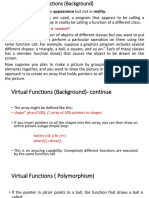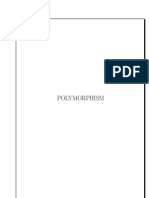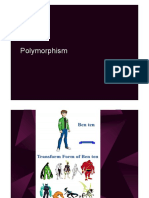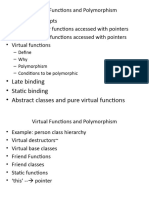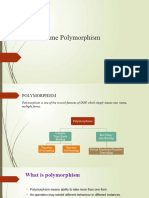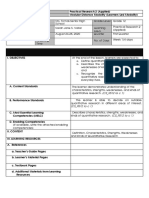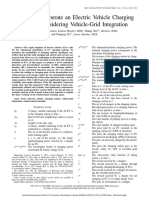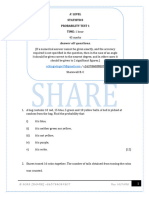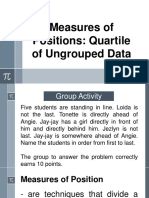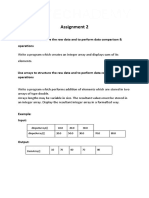0% found this document useful (0 votes)
156 views34 pagesVirtual Function in C++
Polymorphism allows the same general type of action to be accomplished in different ways by different types of objects. Virtual functions allow polymorphism by binding functions at runtime through a vtable, allowing subclasses to override parent functions and achieve polymorphic behavior through a common interface.
Uploaded by
sachin2k9Copyright
© © All Rights Reserved
We take content rights seriously. If you suspect this is your content, claim it here.
Available Formats
Download as PPT, PDF, TXT or read online on Scribd
0% found this document useful (0 votes)
156 views34 pagesVirtual Function in C++
Polymorphism allows the same general type of action to be accomplished in different ways by different types of objects. Virtual functions allow polymorphism by binding functions at runtime through a vtable, allowing subclasses to override parent functions and achieve polymorphic behavior through a common interface.
Uploaded by
sachin2k9Copyright
© © All Rights Reserved
We take content rights seriously. If you suspect this is your content, claim it here.
Available Formats
Download as PPT, PDF, TXT or read online on Scribd
/ 34

